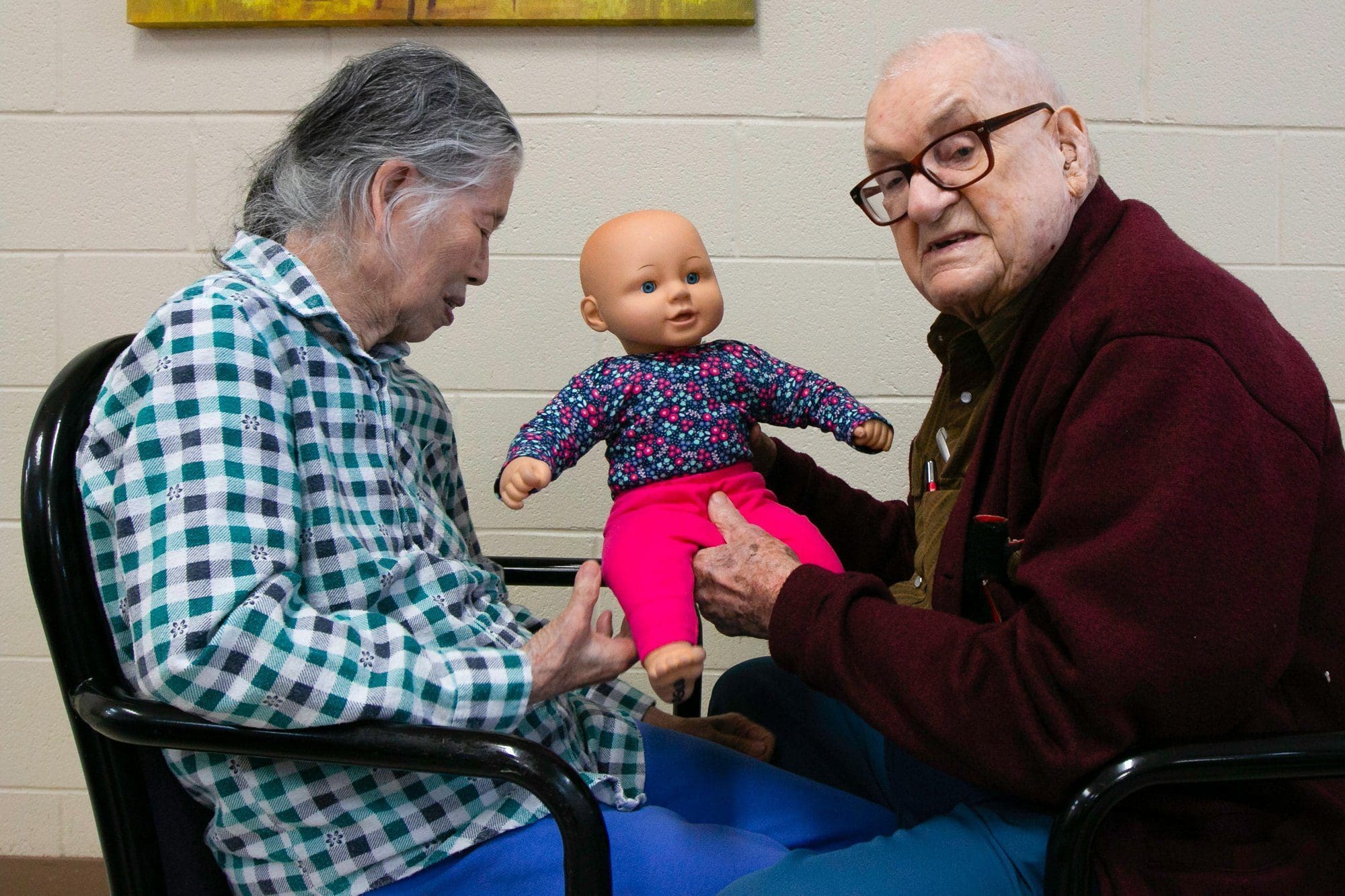In April 2019, the At Home Care team was able to interview some of the friends, clients, and caregivers that make the Flint Hills of Kansas the wonderful place it is! Here is one of the stories…
This is the last part of a three part series about twenty-six year Army veteran Bob and his lovely wife, Asako. To learn where Bob served during World War 2, click here. To read about Bob and Asako’s unlikely romance, click here.
When Asako’s dementia first started, she would hold onto Bob’s coat sleeve in the grocery store so she didn’t lose him. She really had nothing to worry about. After twenty-three years in the military and sixty-three years married, Bob is a man of priorities. Clearly she’s at the top of the list.
Every morning between 10 and 11:00, Bob comes and sits with Asako in the memory care unit of a local long-term care center. He loves to cook and sometimes he brings her traditional homemade Japanese food, the taste of her childhood.
Asako’s movements have become slow and are sometimes a mystery to her caregivers, but Bob always knows what she’s doing. She picks at his sleeve with her wrinkled fingers. “She’s sewing now,” Bob says, “She was good at fixing and making clothes. She’s sewing now.”
Finding a Comforting Influence
As Asako’s mental clarity began to decline, the caregivers in the memory care unit were baffled; it was hard to find something that would give her comfort and keep her occupied. Bob and the others tried many different activities to try to bring some stability for Asako, but it was hard. One day Bob had the idea to bring her a realistic doll. This was the answer! The “baby” is now called Marie, and Asako cares for the doll as if it were a beloved child. She loves to hold the baby and care for it. When Bob visits, they “take care” of Marie together. Obviously the doll is a stabilizing force in Asako’s life. It brings her peace and comfort like nothing else had done. Someone mentions that, with the way she cradles her baby doll, they can tell she was a really good mother. “Oh yeah!” Bob replies enthusiastically. “The best.”
Finding a Rare Connection
Their two oldest children have since passed away, but their youngest son, Jim, visits whenever he can. Asako doesn’t recognize Bob or their son, but, like all dementia patients, she has a sweet moment of clarity every once in a while. Last time Jim visited, she had one of those moments.
Jim and Bob walks into the dementia unit. Bob asks, “Do you know who Jimmy is?”
Asako hesitates, confused at first. “Jimmy?” They haven’t called him Jimmy since he started high school, but maybe the old nickname will trigger something.
“Yeah,” Bob says. “That’s little Jimmy. Your son, Jimmy.”
Recognition dawns and Asako grabs her son in a hug and kisses him.
Amazingly, the slightest change — calling a loved one by a familiar nickname “Jimmy” instead of by his formal name “Jim” was all it took to bridge the memory gap created by dementia.
Bob leans forward and brushes some lint off Asako’s sleeve after telling that story. “She loves him a lot.”
Finding Peace While Walking Through Dementia
Dementia affects thousands of Americans every day. The emotional and physical impact of caring for someone who has been affected with dementia is often not felt until much later. If you or someone you know is dealing with the effects of watching a loved one go through this, you are not alone. Here is a comprehensive support guide for caregivers of Alzheimer’s and Dementia patients.
At Home Care offers companionship and expert services for your senior loved one. Request a free consultation today to get started.



